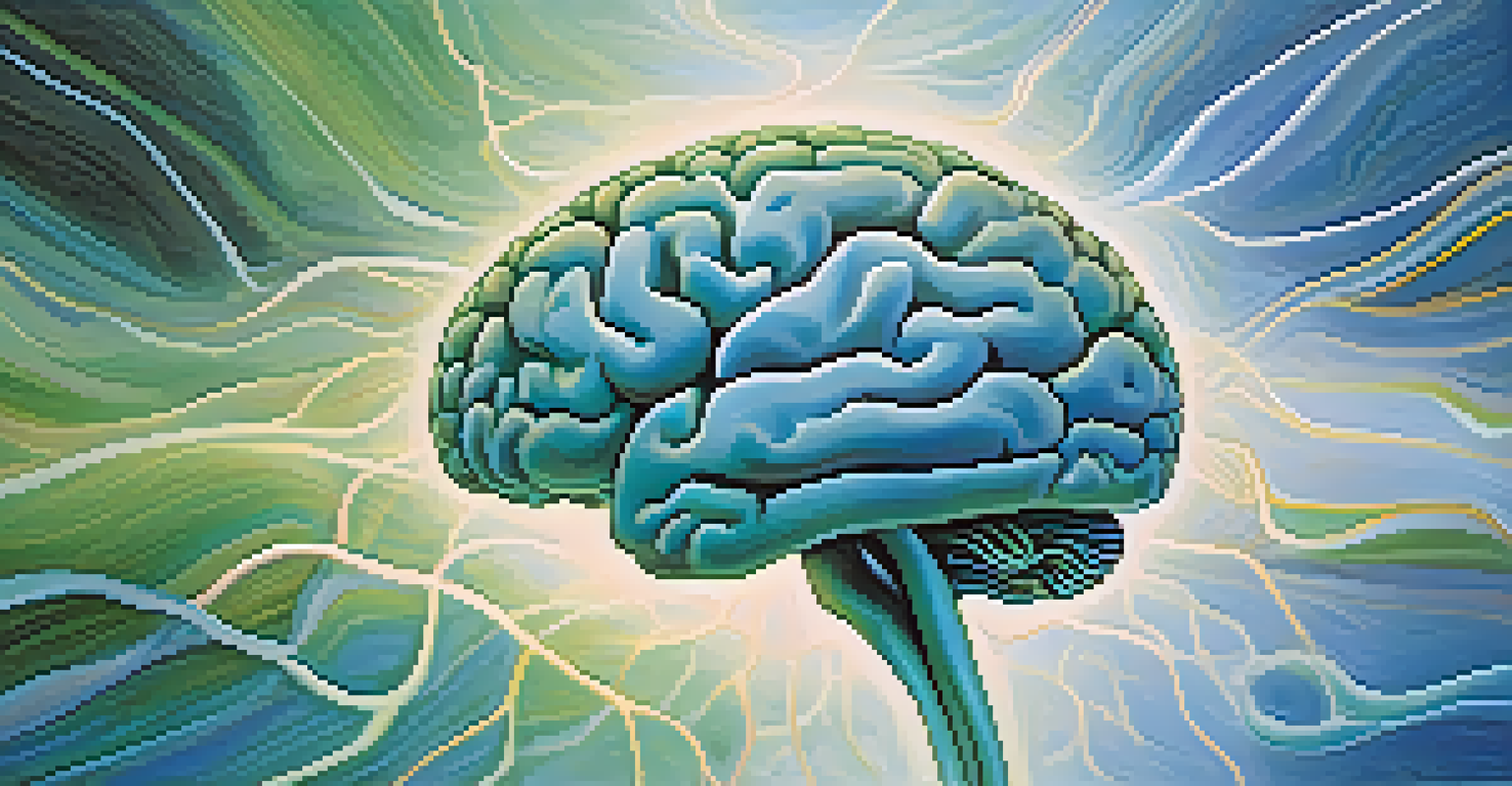The Intersection of Peyote and Modern Psychotherapy Techniques

Understanding Peyote: A Brief Overview
Peyote, a small cactus native to Mexico and the southwestern United States, has been used for centuries in spiritual and healing practices. Its psychoactive properties primarily come from mescaline, which can induce altered states of consciousness. This unique experience has attracted the attention of both traditional and modern healing practices alike.
Psychedelics offer a unique opportunity to enhance our understanding of consciousness, healing, and the interconnectedness of all life.
In many Indigenous cultures, peyote is revered for its ability to foster deep introspection and connection with nature. These traditional uses highlight its significance in ceremonies aimed at healing both physical and mental ailments. As we explore its intersection with modern psychotherapy, it’s essential to appreciate this rich cultural context.
Today, interest in peyote has surged within the realm of psychotherapy, particularly in discussions about alternative treatments for mental health issues. This renewed focus urges a closer examination of how it can fit into contemporary therapeutic frameworks.
The Science Behind Peyote's Effects
Psychoactive substances like peyote interact with the brain's neurotransmitter systems, particularly serotonin receptors. This interaction can lead to profound shifts in perception, emotion, and cognition. Understanding these mechanisms is crucial for therapists considering its use in treatment.

Research has shown that peyote can promote neuroplasticity, the brain's ability to reorganize itself by forming new neural connections. This is particularly beneficial for individuals dealing with trauma or addiction, as it allows for new perspectives and coping strategies to emerge. The potential for healing through such profound experiences cannot be overstated.
Peyote's Cultural Significance
Peyote is deeply rooted in Indigenous healing practices, serving as a tool for spiritual and emotional healing within community rituals.
However, it's important to approach the science with caution. While initial studies are promising, ongoing research is necessary to fully comprehend the long-term effects and therapeutic potential of peyote in psychotherapy.
Peyote in Traditional Healing Practices
For centuries, peyote has played a significant role in various Indigenous healing rituals. These ceremonies often involve guided experiences that facilitate spiritual and emotional healing, emphasizing community support and connection to nature. This holistic approach contrasts sharply with the often isolated experiences of modern therapy.
The healing of the spirit is the foundation of healing of the body.
In these traditional settings, the use of peyote is not just about the substance itself but the accompanying rituals, prayers, and community bonds that enhance the healing experience. The integration of these elements can be a valuable lesson for modern psychotherapists seeking to create a more supportive environment for their clients.
As we consider the potential of peyote in contemporary practices, it's crucial to honor and respect these cultural traditions. Incorporating elements of traditional healing can enrich the therapeutic process, fostering a deeper sense of connection and understanding.
Modern Psychotherapy Techniques: An Overview
Modern psychotherapy encompasses a variety of techniques, including cognitive-behavioral therapy (CBT), mindfulness-based therapy, and somatic experiencing. Each of these approaches aims to address mental health issues through different lenses, focusing on thoughts, emotions, and bodily sensations. Understanding these methods is essential for considering how peyote might fit into modern practices.
CBT, for example, emphasizes recognizing and restructuring negative thought patterns, while mindfulness practices encourage present-moment awareness. These techniques can be complemented by the introspective nature of peyote experiences, potentially leading to breakthroughs in understanding and healing.
Therapeutic Potential of Peyote
Research suggests that peyote may enhance neuroplasticity and provide new insights in modern psychotherapy for conditions like trauma and addiction.
By integrating peyote into these frameworks, therapists may enhance the therapeutic process, offering clients new pathways to explore their thoughts and emotions. This intersection invites exciting possibilities for healing and transformation.
Psychedelic Therapy: A Growing Field
Psychedelic therapy is an emerging field that explores the use of substances like peyote in therapeutic settings. With a growing body of research supporting the efficacy of psychedelics for treating conditions like PTSD and depression, many therapists are beginning to consider these options more seriously. This shift represents a significant change in how we view mental health treatment.
Psychedelic-assisted therapy often involves guided sessions where clients are supported through their experiences, allowing for deep emotional processing. This approach aligns well with the traditional use of peyote, where guidance and community support are integral components of the healing journey.
As the stigma surrounding psychedelics diminishes, more practitioners are likely to explore the benefits of incorporating substances like peyote into their therapeutic practices. This evolution presents a unique opportunity to bridge ancient wisdom with modern science.
Ethical Considerations in Using Peyote
While the potential benefits of using peyote in psychotherapy are compelling, ethical considerations must guide its use. Respecting Indigenous cultures and their traditional practices is paramount, as appropriation can lead to harm and misunderstanding. Therapists must approach this intersection with sensitivity and awareness.
Additionally, informed consent is crucial when introducing any psychoactive substance into therapy. Clients should be fully educated about what to expect, including potential risks and benefits. This transparency fosters trust and empowers clients to make informed decisions about their healing journeys.
Ethical Use of Peyote in Therapy
Ethical considerations, including respect for Indigenous cultures and informed consent, are crucial for the responsible integration of peyote into therapeutic settings.
As the field evolves, establishing ethical guidelines for the use of peyote in therapeutic settings will be essential. This will help ensure that practices remain respectful, safe, and beneficial for all involved.
The Future of Peyote in Psychotherapy
The future of peyote in psychotherapy is promising, with increasing interest and research in the field. As more therapists explore its potential, we may witness a paradigm shift in how mental health issues are addressed. This shift could lead to a deeper understanding of the mind-body connection and the role of spirituality in healing.
Continued dialogue between researchers, practitioners, and Indigenous communities will be crucial in shaping the future landscape of peyote use in therapy. Collaborative efforts can help ensure that practices are rooted in respect and understanding, benefiting everyone involved.

Ultimately, the intersection of peyote and modern psychotherapy invites us to rethink our approach to mental health. By integrating diverse healing practices, we may unlock new avenues for growth and healing that honor both tradition and innovation.